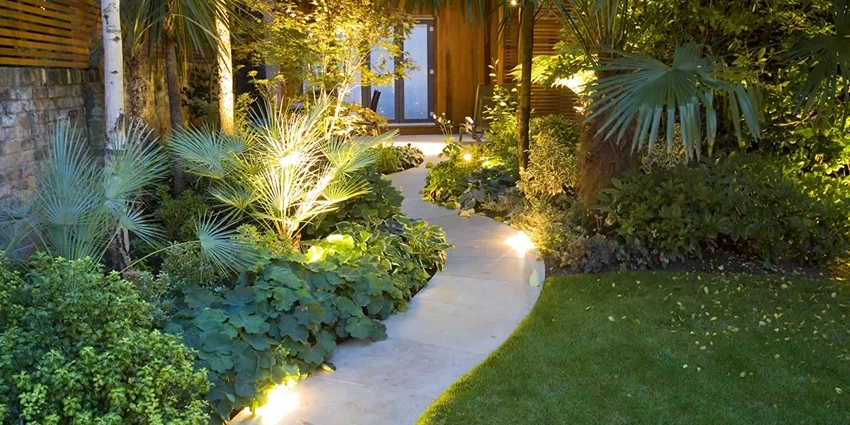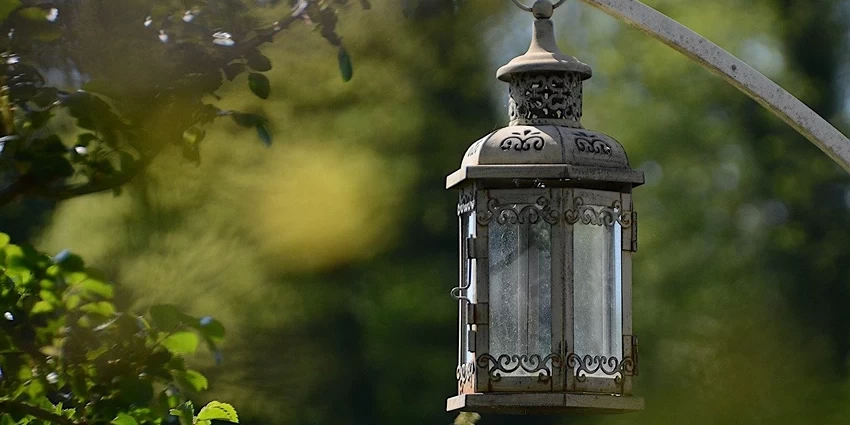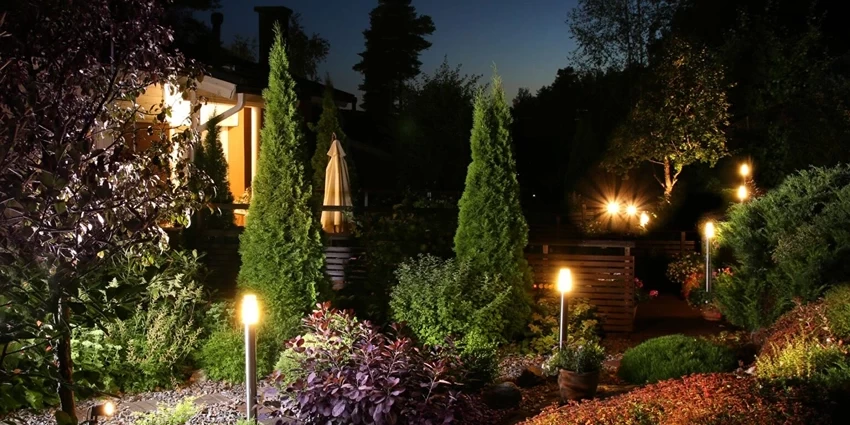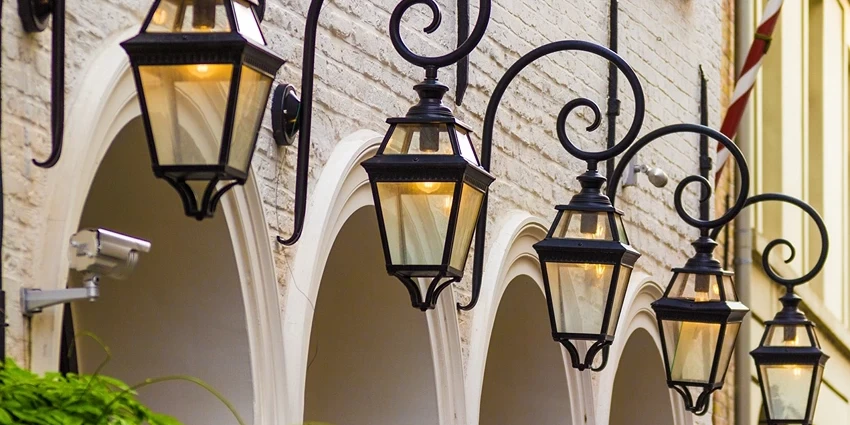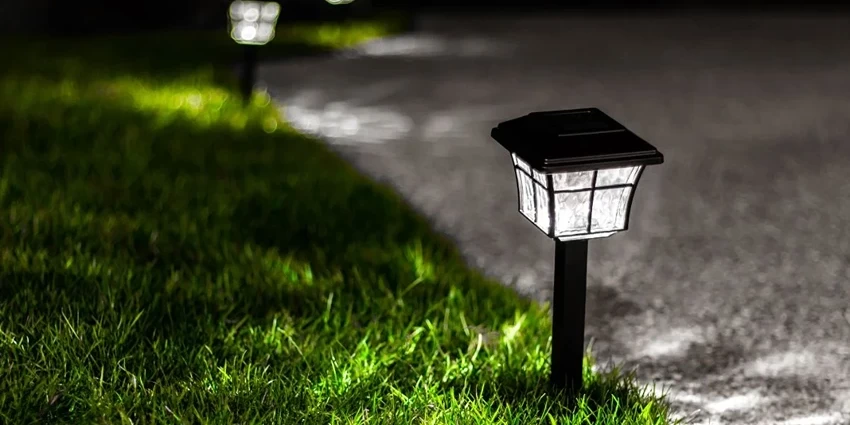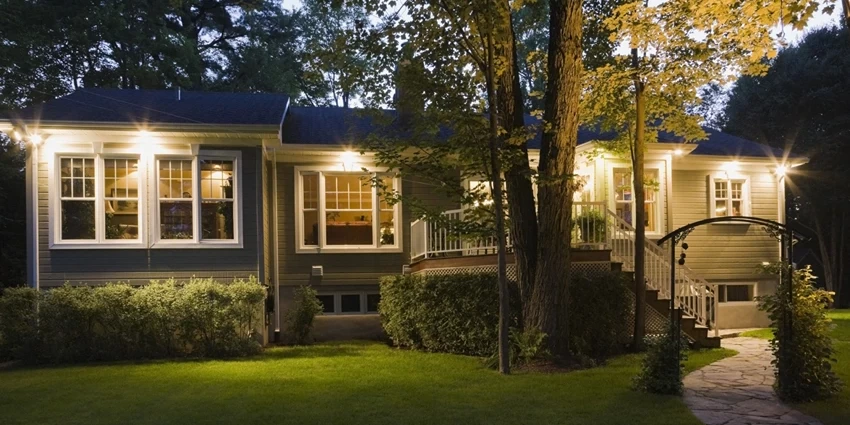All products were chosen independently by our editorial team. This review contains affiliate links and we may receive a commission for purchases made. Please read our affiliates FAQ page to find out more.
Home » Outdoor Lights » In-Ground Landscape Lights: Illuminating Your Outdoor Space
In the heart of the United Kingdom, where the architecture blends seamlessly with lush landscapes, the importance of outdoor lighting cannot be overstressed. In-ground landscape lights are not just functional elements that enhance visibility and safety; they are also integral to the aesthetic appeal of outdoor spaces, transforming gardens, pathways, and patios into enchanting scenes as night falls.
Key Takeaways
- In-ground landscape lights offer both aesthetic and functional benefits, enhancing safety and creating captivating outdoor spaces.
- Choosing the right type of light, such as LED, halogen, or solar-powered, depends on your specific needs and environmental considerations.
- Proper placement and installation are crucial for achieving optimal illumination and visual appeal.
- Innovative uses of in-ground lights can highlight landscape features, improve security, and support various outdoor activities.
In-ground lighting is a versatile solution that caters to a wide range of outdoor lighting needs, from accentuating garden features to illuminating walkways. This article delves into the world of in-ground landscape lights, offering insights into their types, benefits, design considerations, and innovative uses, with a focus on the UK market.

Introduction to In-Ground Landscape Lights
Definition and Purpose
In-ground landscape lights, also known as well lights or ground lights, are embedded into the ground to provide illumination without the light source being visible. These lights serve multiple purposes: they enhance the beauty of outdoor spaces, improve navigability by lighting up pathways and steps, and increase security by eliminating dark spots in gardens and yards.
Benefits of In-Ground Lighting in Landscaping
The benefits of incorporating in-ground lights into your landscape design are manifold. They not only accentuate the architectural features and natural beauty of your outdoor space but also contribute to a safer environment by illuminating potential trip hazards. Moreover, these lights can significantly increase the curb appeal and value of your property.
Types of In-Ground Landscape Lights
When it comes to choosing in-ground lights, there are several options available, each with its own set of advantages.
Spotlights vs. Floodlights
| Type | Best For | Illumination |
| Spotlights | Focusing light on specific features, such as statues or trees. | Narrow beam, intense light |
| Floodlights | Broad illumination for large areas like driveways or gardens. | Wide beam, softer light |
LED vs. Halogen vs. Solar-Powered Lights
LED lights are highly energy-efficient and have a long lifespan, making them a popular choice for homeowners. Halogen lights, on the other hand, offer a warm glow but consume more energy and require frequent replacements. Solar-powered lights are eco-friendly and cost-effective in the long run, as they rely on solar energy to function.
Decorative vs. Functional In-Ground Lights
While decorative lights add a touch of elegance and charm to your garden, functional lights are essential for safety and navigation. The choice between the two depends on your primary goal: to beautify your landscape or to illuminate it for practical purposes.

Design Considerations for In-Ground Lighting
Choosing the right in-ground lights for your landscape involves more than just selecting the type of light. Here are some key considerations to keep in mind:
Choosing the Right Lights for Your Landscape
Consider the size of the area you want to illuminate, the type of features you wish to highlight, and the overall aesthetic you aim to achieve. It’s also important to factor in the UK’s weather conditions when selecting materials and designs that can withstand the elements.
Placement Strategies for Optimal Illumination
To achieve a balanced and cohesive look, distribute lights evenly and strategically. Use spotlights to highlight key features and floodlights for general illumination. Ensure that lights are placed in a way that minimizes glare and light pollution.
Safety and Installation Tips
Safety should be a top priority when installing in-ground lights. Always follow the manufacturer’s instructions and consider hiring a professional electrician for the installation, especially for wired lights. For DIY enthusiasts, solar-powered lights offer a simpler, safer installation process.
Installation and Maintenance
The installation process varies depending on the type of in-ground light you choose. While solar-powered and battery-operated lights are relatively easy to install, wired lights may require professional assistance.
DIY vs. Professional Installation
| Installation Type | Pros | Cons |
| DIY | Cost-effective, suitable for solar and battery-operated lights. | Limited to simpler installations, risk of improper installation. |
| Professional | Ensures safe and correct installation, especially for wired lights. | Higher initial cost. |
Routine Maintenance Tips
Regular maintenance is crucial to ensure the longevity and performance of your in-ground lights. This includes cleaning the lights to remove dirt and debris, checking for water ingress, and replacing bulbs as needed.
Troubleshooting Common Issues
Common issues with in-ground lights include moisture buildup, wiring problems, and bulb failures. Regular inspections can help identify and resolve these issues promptly, preventing further damage.

Innovative Uses of In-Ground Lights in Landscaping
In-ground lights are not just for illumination; they can also be used creatively to enhance the beauty and functionality of your outdoor space.
Highlighting Pathways and Features
Strategically placed in-ground lights can create a dramatic effect by highlighting pathways, trees, water features, and architectural elements. This not only adds visual interest but also guides visitors through your garden.
Creating Ambiance and Enhancing Security
In-ground lights can be used to create a warm and inviting ambiance for outdoor gatherings. Additionally, they enhance security by lighting up dark corners and deterring potential intruders.
Seasonal and Event Lighting Ideas
With the versatility of in-ground lights, you can easily adapt your outdoor lighting to suit different seasons and events. For instance, colorful LED lights can add a festive touch during the holidays, while soft, warm lights can create a romantic atmosphere for outdoor weddings.
Advanced Tips for Maximizing Your In-Ground Lighting
Integrating Smart Technology
Smart in-ground lights, which can be controlled via smartphone apps or smart home systems, offer convenience and flexibility. They allow you to adjust brightness, color, and scheduling, enhancing both the functionality and ambiance of your outdoor lighting.
Energy Efficiency and Sustainability
Opting for LED and solar-powered lights not only reduces energy consumption but also minimizes your carbon footprint. Consider lights with motion sensors to further conserve energy by ensuring lights are only on when needed.

Maintaining Your In-Ground Lights
Regular maintenance ensures your in-ground lights continue to function effectively and safely. Here are some tips:
- Cleaning: Gently clean the lights with a soft cloth to remove dirt and debris.
- Inspection: Regularly check for damage or wear, especially after extreme weather conditions.
- Replacement: Replace bulbs or parts according to the manufacturer’s recommendations to maintain optimal performance.
Innovative Design Ideas Using In-Ground Lights
In-ground lights can be used creatively to achieve various effects and functionalities in your garden or yard. Here are some ideas:
- Pathway Patterns: Arrange lights in patterns or sequences to create visually striking pathways.
- Zoning: Use different lighting styles to define and separate different areas of your outdoor space, such as dining areas, lounges, or pools.
- Seasonal Themes: Adapt your lighting to seasonal themes using color-changing LED lights for festive decorations or special occasions.
Table: Comparing Light Types for Various Applications
| Light Type | Energy Efficiency | Brightness | Best for |
| LED | High | Variable | Pathways, feature highlighting |
| Halogen | Low | High | Warm, ambient lighting |
| Solar-Powered | High | Low-Medium | Eco-friendly, easy installation |
Table: Maintenance Schedule for In-Ground Lights
| Task | Frequency |
| Cleaning | Monthly |
| Inspection | Bi-annually |
| Bulb Replacement | As needed |
Register for our latest in-depth reviews and product round-ups from the experts.
Enter your email address below to receive our monthly review emails.
By entering your details, you are agreeing to our terms and conditions and privacy policy. You can unsubscribe at any time.
Frequently Asked Questions
Choosing the right in-ground lights involves assessing your outdoor space’s specific needs and aesthetic goals. Consider the following factors:
- Purpose: Determine whether you need lighting for safety, aesthetics, or both.
- Type of Light: Decide between LED, halogen, or solar-powered lights based on efficiency, brightness, and installation requirements.
- Design: Select lights that complement your outdoor space’s style and architecture.
Yes, most in-ground lights are designed to withstand various weather conditions, including rain, snow, and extreme temperatures. However, it’s crucial to choose lights with appropriate IP (Ingress Protection) ratings to ensure durability and performance in the UK’s weather.
- Plan Your Layout: Sketch your garden and decide where each light will go.
- Consider Wiring: For wired systems, think about the placement of cables and the proximity to power sources.
- Safety First: Always follow the manufacturer’s installation guidelines and consider hiring a professional for electrical installations.
Eleanor is the quintessential spirit of the British gardener — passionate, dedicated, and endlessly curious about the natural world. Born and raised amidst the verdant landscapes of the Cotswolds, she developed an early love for the outdoors, often spending hours in the family garden with her hands buried in the soil, nurturing every type of plant she could find.



